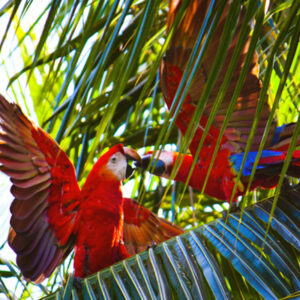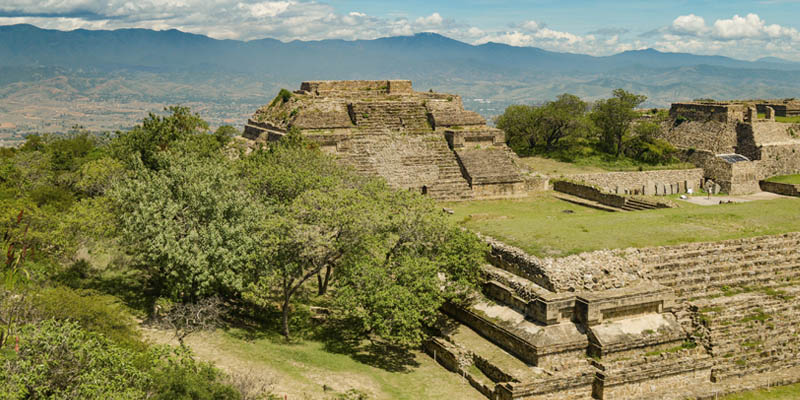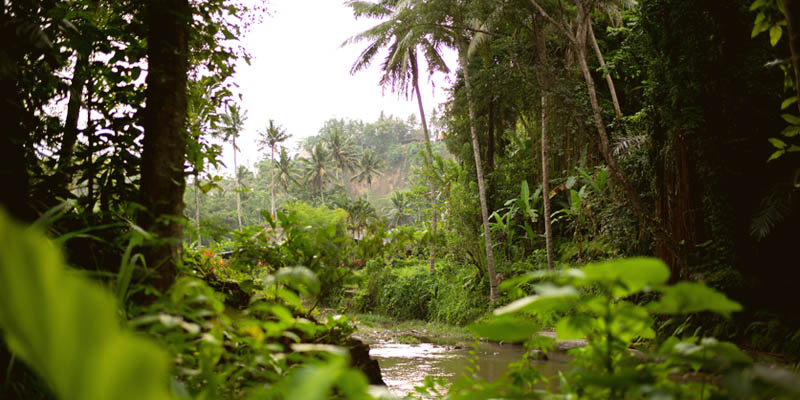Table of Contents
CHARACTERISTICS OF THE AMERICAS
Biography
- They make up the world’s second-largest continent after Asia.
- The earliest populations date back to the Pre-Columbian era, with indigenous peoples and civilizations such as the Aztecs, Incas, and Mayas.
- Due to their vast latitudinal extent and large surface area, they boast a wide variety of ecosystems and climates.
- They feature cold climates in the northernmost and southernmost regions, temperate climates in the mid-latitudes, and warm climates near the equator and in the tropics.
- The most widely spoken languages are English (in Anglo- America) and Spanish (in Latin America). Portuguese and French are also spoken.

- Continent:
the Americas
- Area:
16,724,000 sq mi (43,316,000 km2)
- Population:
Over 1,000,000,000,000 people.
- Number of countries:
35 independent countries and over 20 dependent territories.
We explore the Americas, and describe the physical and cultural characteristics. In addition, we discuss the economy, religion and history of this continent.

What are the Americas?
The Americas, also known as America in Spanish, are one of Earth’s six continents and the world’s second largest after Asia. They comprise a substantial portion of the Western Hemisphere, stretching from the northern reaches of Greenland to the southern tip of Argentina and Chile. They cover a total area of 16,41 million square miles (42.5 million km2), which accounts for 28.3% of the planet’s total land area.
How did the Americas get their name? The name "America" derives from Amerigo Vespucci, a Florentine navigator who was arguably the first to suggest that the whole landmass was an entirely new continent rather than an undiscovered part of Asia, as previously thought by Spanish, Portuguese, and English explorers.
Vespucci wrote several reports on his voyages, which were widely disseminated and read by explorers and cartographers of the time. In 1507, German cartographer Martin Waldseemüller included a new continent on his world map, naming it "America" after Amerigo Vespucci.
Before receiving the name "America", the continent was referred to as the "Castilian Kingdoms" or the "West Indies."
CHARACTERISTICS OF THE AMERICAS
- They make up the world’s second-largest continent after Asia.
- The earliest populations date back to the Pre-Columbian era, with indigenous peoples and civilizations such as the Aztecs, Incas, and Mayas.
- Due to their vast latitudinal extent and large surface area, they boast a wide variety of ecosystems and climates.
- They feature cold climates in the northernmost and southernmost regions, temperate climates in the mid-latitudes, and warm climates near the equator and in the tropics.
- The most widely spoken languages are English (in Anglo- America) and Spanish (in Latin America). Portuguese and French are also spoken.
- See also: North America
Area, population and countries of the Americas

The American continent covers an area of 16,724,000 square miles (43,316,000 km2), stretching from the frozen deserts of Alaska and Greenland to southern Patagonia, which accounts for 8.4% of Earth's total surface area and 28.3% of its total land area. It is bounded by the Arctic Ocean to the north, the Atlantic Ocean to the east, the Pacific Ocean to the west, and Antarctica to the south.
Structurally and geologically, the Americas are divided into two large triangular-shaped continental landmasses connected by a narrow and elongated strip of land. The northern part receives the name of North America, the southern is referred to as South America, and the isthmus that joins them is called Central America.
The Americas are made up of 35 independent countries and more than 20 dependent territories. Most of these dependent territories belong to France, England, the Netherlands, and the United States.
The largest countries in the Americas by area are: Canada, with 3.8 million square miles (9.9 million km2), the United States with 3.6 million square miles (9.4 million km2), and Brazil with 3.24 square miles (8.5 million km2). As for the dependent territories, the largest is Greenland, spanning 0.81 square miles (2.1 million km2), which is governed by Denmark.
The total population of the Americas exceeds 1 billion people, accounting for 13 % of the world's total population. The most populous countries on the continent are the United States with 331 million inhabitants, Brazil with 203 million, and Mexico with 127 million. As for the dependent territories, the most populous is Puerto Rico, a United States’ territory, with 3.3 million inhabitants.
History of the Americas
Though the history of the Americas is vast and complex, it can be divided into the following periods:
- Pre-Columbian era. It occurred prior to the arrival of the Europeans in the 15th century. During this period, indigenous American cultures flourished in various regions throughout the continent: the Aztecs and the Maya in North and Central America, the Incas in the Andes, as well as a large number of nomadic peoples that scattered across the continent. These cultures were characterized by having their own distinctive religions, languages, customs, economies, technologies, and political organizations.
- Colonial period. It began with the arrival of the Europeans in the 15th century and lasted until the early 19th century. During this period, the European powers colonized the Americas, imposing different political systems, religion, and languages throughout the continent. Spain and Portugal were the main colonizers of Latin America, while France, England, and Holland colonized North America and the Caribbean. As a consequence of the European colonization, massacres, working conditions, and the spread of diseases, a complete genocide of the indigenous peoples of the Americas took place during this period.
- Republican period. It began in the 19th century, as American countries fought for independence, forming their own nations. This period saw a series of political, economic, and social changes such as the abolition of slavery, the fight for equal rights, and economic modernization.
Physical geography and climate of the Americas

Due to their great latitudinal extent and vast surface area, the Americas boast a great variety of ecosystems and climates. Cold climates are found in the northernmost and southernmost regions, temperate climates in the mid-latitudes, and warm climates near the equator and in the tropics.
The Cordillera and the Andes, which traverse the Americas north-south, also affect the climate, since elevation causes temperatures to drop. Therefore, the mountainous areas of the American continent also experience cold climates.
In addition to the Cordillera and the Andes, the Americas have considerably high elevations in the Appalachian Mountains in the United States, and in the Guiana and Brazilian Highlands in South America. The rest of the continent's topography is relatively flat, with extensive plains like the Great Plains in North America and the Orinoco, Amazon, and Plata river plains in South America.
The Americas are also characterized by the presence of long and large plain rivers. The Mississippi River in the United States and the Orinoco, Amazon, Paraná, and Uruguay rivers in South America are among the most important in the Americas and the world.
- See also: Physical geography of the Americas
Culture and religion in the Americas

Culturally, the American continent is divided into two major regions:
- Anglo-America. It comprises countries where English is the official language, and which were colonized by Great Britain during the European conquest. The United States, Canada, and Jamaica are some of the countries that make up Anglo-America.
- Latin America. It comprises countries where Spanish, French, or Portuguese are the official languages, all of which are derived from Latin. It comprises nearly all the countries in the Americas.
The most spoken languages in the Americas are:
- English. Mainly spoken in the United States and Canada, but also in some Central American countries, as well as in Guyana and Suriname in South America. An estimate of 370 million people speak English on the American continent.
- French. Spoken in some regions of Canada and on some Caribbean islands in Central America. It is the official language for around 16 million people.
- Spanish. Spoken in most Central and South American countries and in Mexico. It is the most widely spoken language on the American continent, with over 500 million speakers.
- Portuguese. Spoken mainly in Brazil, it is the mother tongue of more than 200 million people.
In addition to these main languages, there are hundreds of other languages related to the indigenous peoples of the Americas, such as Nahuatl, Quechua, Aymara, Guarani, and Mayan, among others.
As for religion, the most widely professed are Catholicism and Protestantantism, the result of the Spanish and English colonial heritage. About 80% of the population of the Americas identifies itself as Christian.
In addition to Christianity, other important religions in the Americas include Islam, Judaism, Buddhism, Hinduism, and Afro-American creeds. The religions, deities, and cults of the cultures of the indigenous peoples of the Americas also persist to the present day.
Economy of the Americas
Economic development in the countries of the Americas is highly uneven. While in most Latin American countries primary activities predominate, in Anglo-Saxon countries, especially in the United States and Canada, activities linked to secondary and tertiary activities are prevalent, having a major influence on world markets.
Due to these contrasts, it is appropriate to analyze the economic activities of the Americas separately:
Economy in Anglo-America
- The United States and Canada are among the world’s most developed countries. Human development indexes (HDI) rank them among the top 15 countries in the world.
- They have a service economy, meaning that most of their income comes from the tertiary sector. Services, trade, finance, and tourism account for over 75% of the income in these two countries.
- Although the primary sector is important worldwide (the United States is the leading producer and exporter of several primary products), its contribution to the local economy barely exceeds 3%.
Economy in Latin America
- Agriculture, livestock, and mining have been the predominant economic activities in Latin American countries since the European conquest and colonization. Today, the primary sector continues to be fundamental to the economy of most Latin American countries.
- These are mostly periphery countries, with economies based on the export of raw products such as wheat, soy, coffee, minerals like copper, gold, silver, and hydrocarbons like oil. In some Latin American countries such as Brazil or Argentina, the industrial and tertiary sectors are also highly developed, but the production and export of raw materials continues to be the main source of income.
Countries in the Americas
The Americas are divided into 35 countries, most of which are former European colonies, and 23 dependencies of European states such as Denmark, the United Kingdom, France, and the Netherlands.
The 35 countries in the Americas are divided territorially as follows:
| Location | Countries |
|---|---|
| North America | Canada United States Mexico |
| Central America | Antigua and Barbuda Bahamas Barbados Belize Costa Rica Cuba Dominica Dominican Republic El Salvador Grenada Guatemala Haiti Honduras Jamaica Nicaragua Panama Saint Kitts and Nevis Saint Lucia Saint Vincent and the Grenadines Trinidad and Tobago |
| South America | Argentina Brazil Bolivia Chile Colombia Ecuador Guyana Paraguay Peru Suriname Uruguay Venezuela |
All sovereign states in the Americas are full members of the United Nations (UN) and most of them are members of the Organization of American States (OAS).
In addition, there are other regional integration blocs such as Mercosur, the Community of Latin American and Caribbean States (CELAC), the Bolivarian Alliance for the Peoples of Our America - Peoples' Trade Treaty (ALBA-TCP), and the Organization of Central American States (ODECA).
Explore next:
Was this information useful to you?
Yes NoThank you for visiting us :)